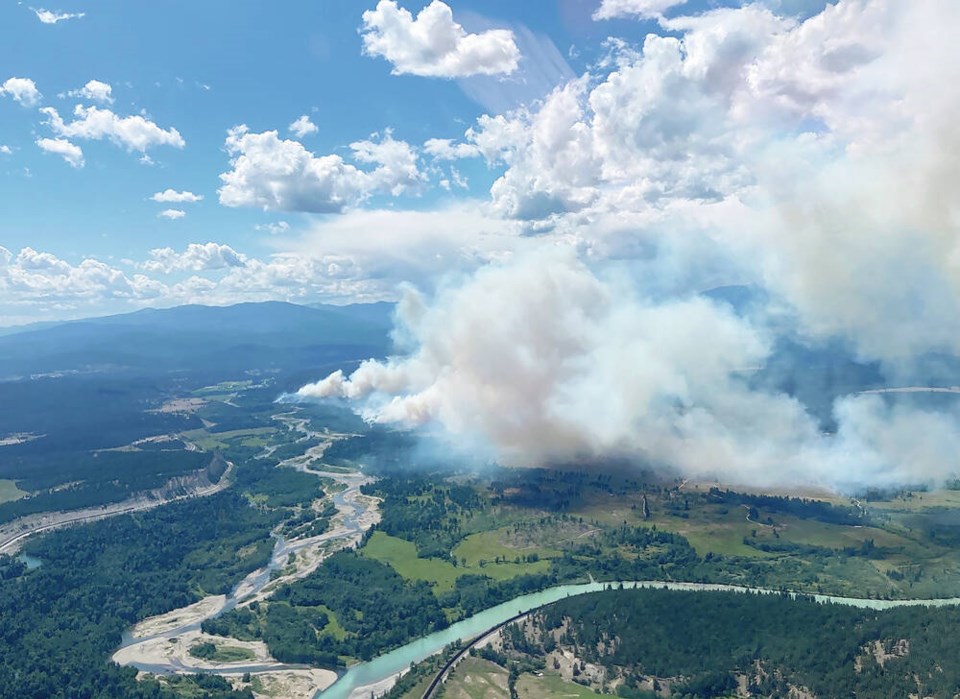Last week, I suggested that we need to listen to the so-called “doomsayers” — those who study global change and have been raising concerns for decades about the unsustainable path on which we are embarked.
Regrettably, and perhaps disastrously, they — we — have been largely ignored, in favour of a “business as usual” approach.
So we now find ourselves in what some — including the Cascade Institute at Royal Roads University — are calling a polycrisis. (In the interest of transparency, I am a member of the institute’s scientific advisory board).
UN Secretary General Antonio Guterres drew attention to this emerging phenomenon in his speech to the UN General Assembly in February, outlining the UN’s priorities for 2023.
“We have started 2023 staring down the barrel of a confluence of challenges unlike any other in our lifetimes,” he said, and went on to list the challenges: “Wars grind on. The climate crisis burns on. Extreme wealth and extreme poverty rage on. The gulf between the haves and have nots is cleaving societies, countries and our wider world. Epic geopolitical divisions are undermining global solidarity and trust.”
His list does not even include the COVID-19 pandemic, from which the world was slowly emerging, nor does it list biodiversity loss and pollution, the other two components — along with climate change — of what the UN Environment Programme calls “a triple crisis.”
The Cascade Institute has an even longer list that make up the polycrisis, which it is studying. In addition to those listed by Guterres, they include financial system instability, ideological extremism, pernicious social impacts of digitalization, cyber attacks, mounting social and political unrest, large-scale forced migrations and an escalating danger of nuclear war.
The institute is one of a number of centres around the world that are studying the polycrisis.
Others include the Institute for Advanced Sustainability Studies in Potsdam, Germany, and the Centre for the Study of Existential Risk at the University of Cambridge.
In a February article in the Globe and Mail, institute director Thomas Homer-Dixon and two of his colleagues discussed the concept of a polycrisis.
While some dismiss the idea as simply meaning “there’s lots of bad stuff happening simultaneously and one thing can affect another,” as one critic of the idea put it, a polycrisis is more than that.
It’s not just a set of isolated crises happening at the same time, wrote Homer-Dixon and his colleagues, but a set of interacting crises that are “producing far greater harm together than the sum of harms they’d produce in isolation.”
In short, a polycrisis is greater than the sum of its parts.
Today’s crises, they wrote, “simultaneously span natural, political, economic and technological systems, because they’re driven by a multiplicity of underlying ‘systemic risks.’ ”
Moreover, those crises “are not only worse than they were one or two decades ago, they’re also getting worse faster,” and often happening at the same time.
So what should we do in the face of a global polycrisis? If, as Naomi Klein wrote in 2014, climate change “changes everything,” surely that is even more true of a polycrisis.
A simple yet profound way to think about systems is provided by the Institute for Healthcare Improvement in its slogan: “Every system is perfectly designed to get the results it gets.”
Our system seems to be perfectly designed to disrupt the Earth systems that are our life-support systems, while at the same time creating massive inequality and poverty and all the other elements of the polycrisis.
So if we want to change the results, we have to change the systems that underlie the polycrisis and lead to those results.
And that is the second main focus of the Cascade Institute’s work. Given the possibilities of rapid transformation inherent in complex systems, can we identify ways to trigger what the institute calls “virtuous cascades” of positive change?
Just as we can hit tipping points that take us into deep trouble, we should be able to find tipping points that take us in the right direction.
Almost 50 years ago we missed that opportunity, as I will discuss next week. We can’t afford to fail again as we work to change everything.
Dr. Trevor Hancock is a retired professor and senior scholar at the University of Victoria’s School of Public Health and Social Policy.
>>> To comment on this article, write a letter to the editor: [email protected]



